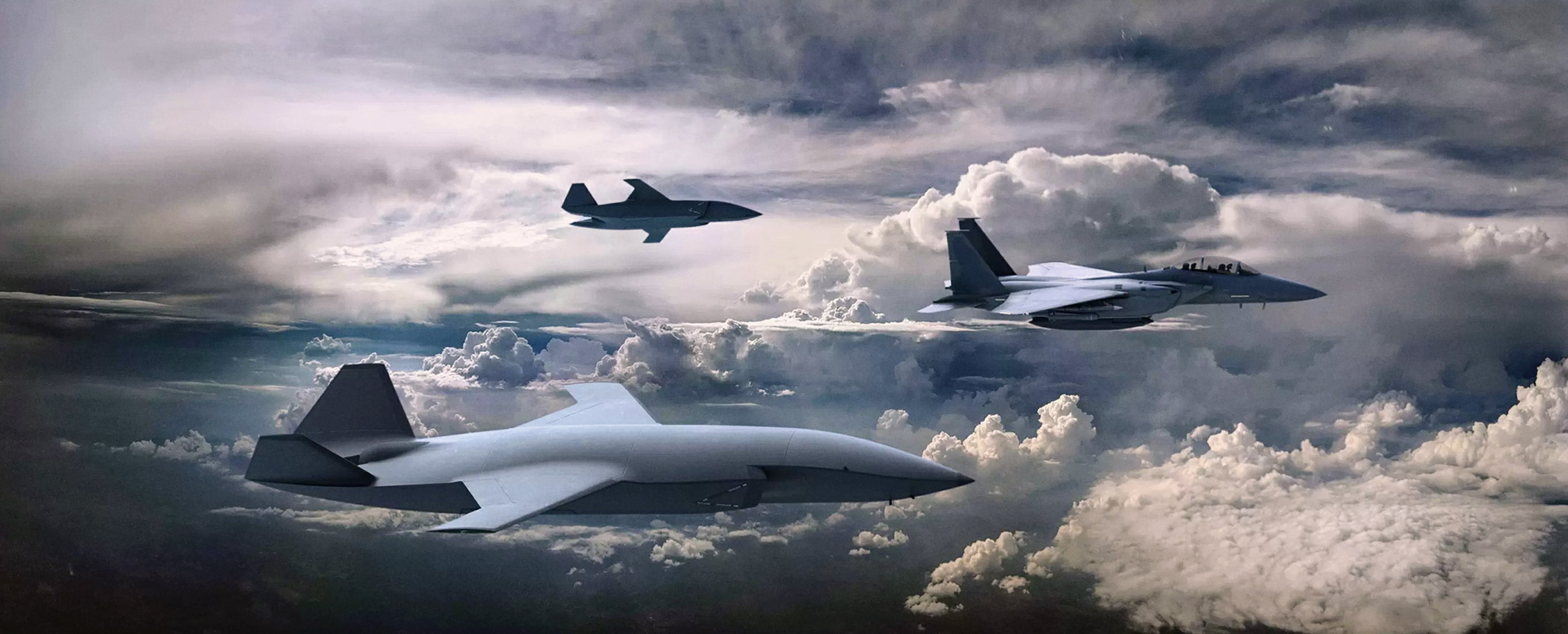DENVER, Colo. — The Air Force plans to whittle down the number of companies working to build the first batch of collaborative combat aircraft to two or three over the next few months, the service’s secretary said Tuesday.
And the Air Force plans to award contracts for the next round of CCAs — drones loaded with autonomous software that would fly themselves into battle alongside crewed fighters — in fiscal 2025, Frank Kendall said during a roundtable at the Air and Space Force Association’s Air Warfare Symposium here.
This next round of CCA development could also involve participation by the United States’ closest and “most strategic” international partners, he said.
On the first increment of CCAs, the Air Force has contracts with five companies: Lockheed Martin, Boeing, Northrop Grumman, General Atomics and Anduril. Kendall said the Air Force would like to cut that to three, but acknowledged budgetary limitations will make choosing just two companies more likely.
The Air Force plans to field several different types of CCAs, with different capabilities and levels of survivability, to carry out a wide range of missions including strikes, surveillance, jamming, and serving as decoys to draw enemy fire.
Kendall said the Air Force is working on its first two “increments” of CCAs as part of its five-year plan, and moving with a “sense of urgency” on the program. As with the first increment of CCAs, he said, the contracts for the second increment will cover concept definition and preliminary design work.
The Air Force will next focus on moving CCAs into production, Kendall said, and in the next few years will further downselect the companies working on the first increment of CCAs. Kendall said it remains uncertain how many companies will move into production, adding that there could be at least two firms working on the initial batch of CCAs.
Andrew Hunter, the service’s assistant secretary for acquisition, technology and logistics, said the Air Force’s CCA program has been closely consulting with Air Combat Command to see what kind of capabilities these aircraft would need in combat.
And the Air Force received a great deal of feedback from industry about how they could meet the service’s loose goal of fielding about 1,000 CCAs, Hunter said.
Companies who didn’t make the cut for the first increment will get a second shot in the next increment, Hunter said.
At least one defense contractor is hoping to do just that. In an interview with Defense News Tuesday, Steve Fendley, president of the unmanned systems division at Kratos Defense and Security Solutions, said that while the company didn’t make the cut for the first round of CCAs, it remains very interested in the program and plans to compete for the next version.
“We’re in the mix,” Fendley said. “Part of what’s important to the Air Force, and to us, is being able to see the range of capability systems and the range of cost systems to satisfy all of the different scenarios and mission challenges” for which the Air Force wants CCAs.
Most of the attention paid to CCAs has so far focused on the companies building the physical drone portion, Hunter said, but “another slew of contractors” is working alongside them on software and other elements of the program.
That work will continue apart from the individual increments to develop the CCA air vehicles, he said. And developing that kind of “foundational architecture” for CCAs is one potential area on which the Air Force can work with international partners, Hunter added.
He said creating a software core that allows a CCA to operate autonomously is the hardest part of this program. The Air Force can get it done in the first batch of CCAs, he noted — but there will be room to improve.
“We have a high degree of confidence that we can deliver useful autonomy in increment one,” Hunter said. “But it will be more limited than I think what you’ll see down the road.”
Stephen Losey is the air warfare reporter for Defense News. He previously covered leadership and personnel issues at Air Force Times, and the Pentagon, special operations and air warfare at Military.com. He has traveled to the Middle East to cover U.S. Air Force operations.





